Boost Your Roof Bids – Request a Precision Estimate!
- Accurancy
- Efficiency
- Transparency
- Customization
- Time Saving
- Professionalism
- Cost Control
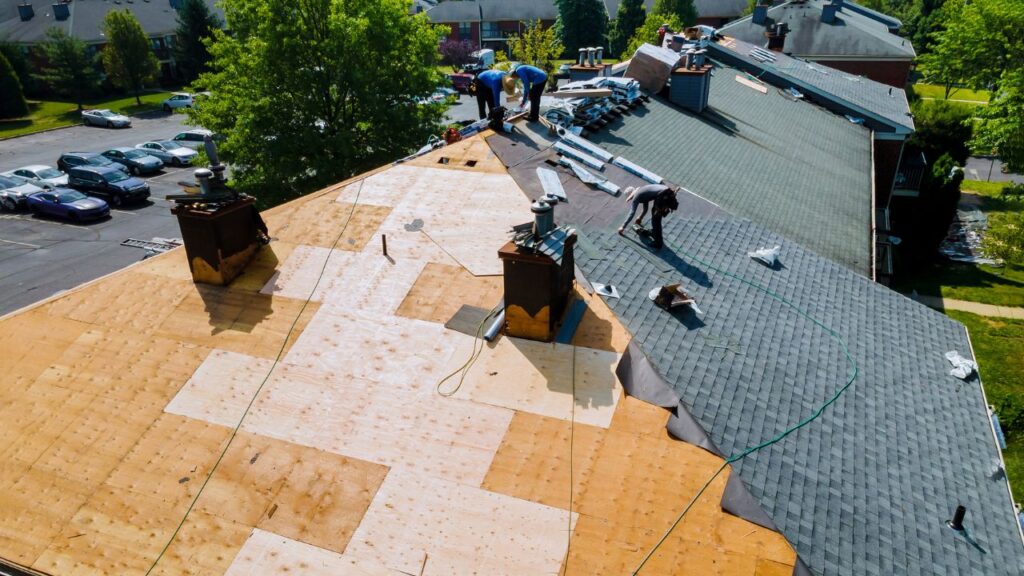
The introduction sets the stage for understanding the complexities of retail store roof replacement. It emphasizes the crucial role of a well-maintained roof in preserving a building’s structure and protecting its contents. As an essential investment, the article aims to provide insights into the multifaceted factors that influence the cost of roof replacement, enabling retailers to make informed decisions.
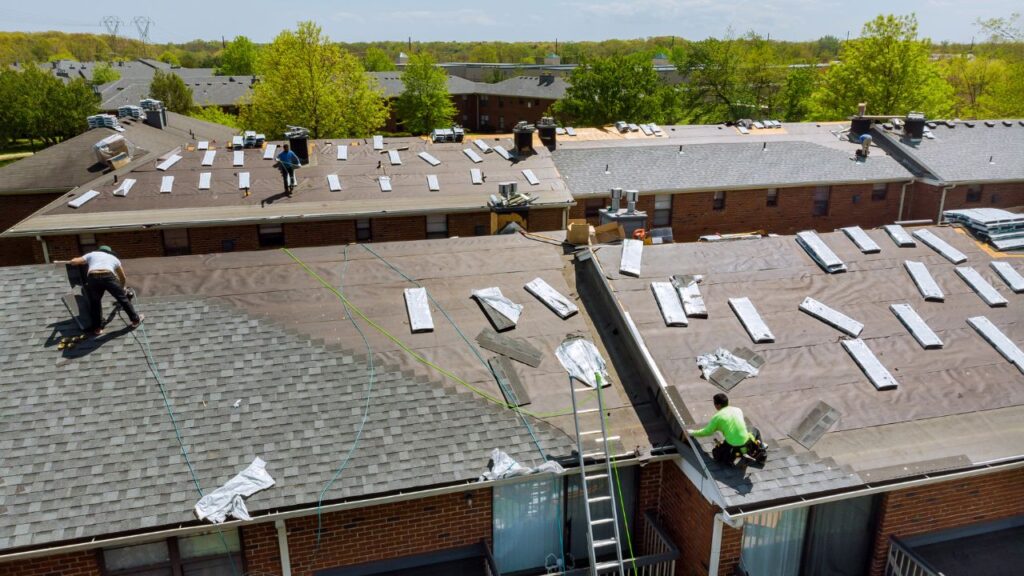
Delving into roofing materials and types, the article explains the diverse options available to retailers. It highlights how each material, be it asphalt shingles, metal roofing, or other variants, comes with unique characteristics and costs. Additionally, it touches upon how the design and complexity of the roof, such as the choice between flat and pitched roofs, contribute to the overall expense.
The section on roof size and square footage underscores the fundamental nature of precise measurements. It explains how the size of the retail store’s roof, measured in square footage, directly correlates with material, labor, and time requirements. Providing clarity on accurate measurements aids retailers in developing a comprehensive cost estimate.
Exploring the scope of work and roofing system components, the article emphasizes the importance of understanding the extent of the replacement process. It delves into how additional structural repairs and the incorporation of features like insulation, ventilation systems, and skylights can contribute to the overall complexity and cost of the replacement project.
The labor costs and contractor selection section focuses on the critical role of skilled labor in roof replacement. It sheds light on how labor costs can vary based on location, contractor expertise, and project complexity. Moreover, it advocates for the significance of choosing a reputable and experienced roofing contractor for quality workmanship and long-term cost savings.
Highlighting the nuances of roof accessibility and safety measures, this section elucidates how these factors can impact costs. It discusses scenarios where challenging roof access or the need for additional safety measures might result in higher labor costs. Acknowledging the importance of safety precautions ensures a holistic understanding of the financial considerations involved.
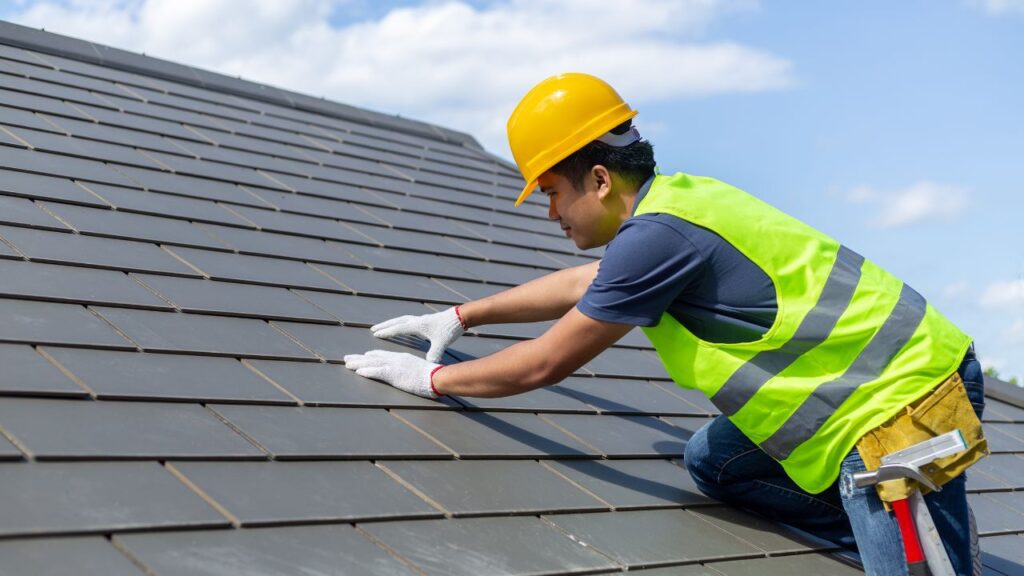
This part of the article explores how local climate and environmental factors play a pivotal role in roof replacement decisions. It articulates how extreme temperatures, heavy rainfall, or high winds can influence the choice of roofing materials and installation methods. Adapting the roofing system to withstand local weather conditions is presented as a prudent investment for long-term performance.
The permits and regulations section underscores the necessity of navigating local building codes and regulations during roof replacement. It elaborates on how obtaining necessary permits and complying with specific codes can add to the overall cost. The article stresses the importance of working with knowledgeable roofing contractors to ensure a seamless process that aligns with local regulations.
The initiation of any roof replacement project involves a thorough initial assessment. This step is crucial as it sets the foundation for the entire cost estimation process. A detailed inspection of the existing roof is undertaken to identify any damage, wear, or structural issues that may affect the replacement. This includes scrutinizing the condition of the current roofing materials, assessing potential leaks or weaknesses, and understanding the overall health of the roof structure. The findings from this assessment serve as the basis for determining the scope of the replacement project and the associated costs.
Choosing the right roofing materials is a critical decision in the roof replacement cost estimation process. The selection is based on various factors, including the geographical location of the retail store, the prevailing climate, and the budget constraints. Options such as asphalt shingles, metal roofing, EPDM (ethylene propylene diene monomer), or TPO (thermoplastic olefin) are considered. Each material comes with its own set of advantages, durability, and cost implications. The goal is to find a balance that aligns with the store’s specific requirements while staying within the predefined budget for the project.

Accurate measurement of the roof’s size and square footage is a fundamental step in determining the material and labor requirements for the replacement. Precision in these measurements is essential for avoiding overestimation or underestimation of the resources needed. Advanced measurement techniques, such as drone surveys or digital mapping tools, may be employed to ensure a comprehensive understanding of the roof’s dimensions. This meticulous approach contributes to the overall accuracy of the cost estimation process.
Defining the scope of work is a crucial aspect of the cost estimation process. This involves outlining the specific tasks and activities that will be part of the roof replacement project. The scope of work may include removal of the existing roofing materials, repairs to the underlying structure, installation of insulation for energy efficiency, ventilation enhancements, and even the incorporation of skylights for natural lighting. Clearly defining the scope ensures that all aspects of the project are accounted for in the cost estimate, preventing surprises or additional costs during the execution phase.
Labor costs constitute a significant portion of the overall roof replacement expenses. Calculating labor costs involves a detailed analysis of several factors. The complexity of the project, accessibility issues, and the need for specialized skills or equipment all contribute to the labor cost calculation. Experienced roofing professionals are often required for tasks such as material removal, installation, and ensuring the new roof meets quality standards. Accurate labor cost estimation is essential for budgeting and ensuring that the right skill set is allocated to the project.
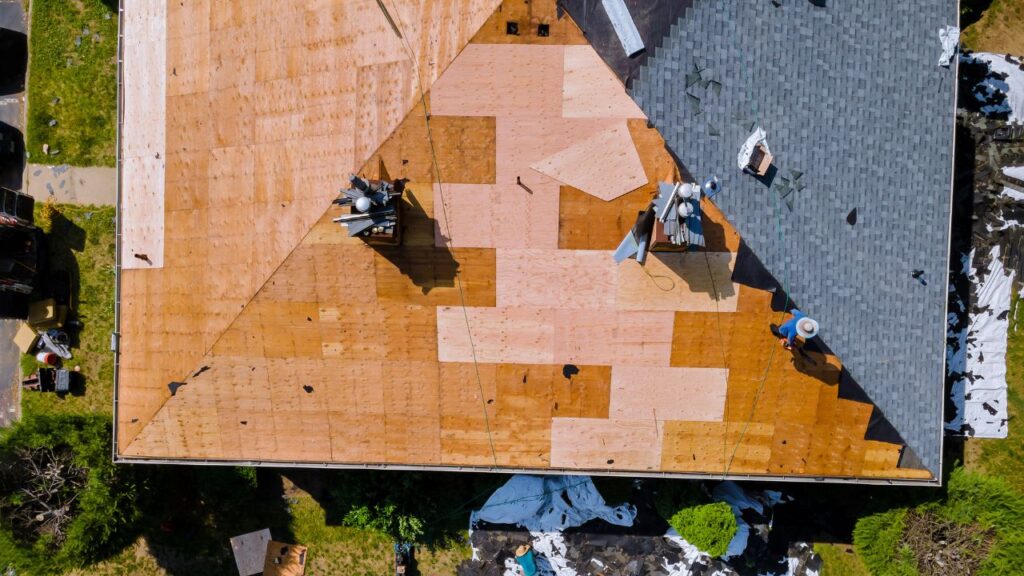
Selecting the right contractor is a pivotal step in the cost estimation process. After defining the scope of work, obtaining detailed quotes from reputable contractors is crucial. Evaluating the expertise and track record of potential contractors through reviews, references, and assessments of past projects is essential for making an informed decision. The selected contractor should not only provide a competitive quote but also demonstrate the ability to deliver quality work within the specified timeframe. This step ensures that the cost estimate aligns with the actual costs associated with the chosen contractor.
Assessing roof accessibility and incorporating necessary safety measures are integral components of the cost estimation process. Depending on the design and height of the retail store, special equipment or safety measures may be required to ensure the well-being of the workers and the efficient execution of the project. This includes factoring in additional costs for safety equipment, specialized tools, or any measures needed to comply with safety regulations. Prioritizing safety not only protects the workforce but also avoids potential setbacks and costs associated with accidents or delays.
Roof replacement expenses typically range from $6,840 to $19,200 on average, influenced by factors such as size, pitch, and material. For a new roof, the average cost per square (100 SF) is approximately $360 to $720, encompassing both materials and installation. Roofing labor expenses are estimated to be around $180 to $360 per square, reflecting the skilled work involved in the replacement process.
House Size | Roof Size | Cost Range ($) |
1,000 | 1,120 | $4,200 – $8,040 |
1,100 | 1,230 | $4,440 – $9,000 |
1,200 | 1,340 | $4,800 – $9,600 |
1,300 | 1,450 | $5,280 – $10,440 |
1,400 | 1,565 | $5,640 – $11,400 |
1,500 | 1,675 | $6,000 – $12,120 |
1,600 | 1,790 | $6,600 – $12,840 |
1,700 | 1,900 | $6,840 – $13,680 |
1,800 | 2,010 | $7,200 – $14,400 |
1,900 | 2,125 | $7,680 – $15,360 |
2,000 | 2,235 | $8,040 – $16,080 |
2,200 | 2,460 | $8,880 – $17,760 |
2,300 | 2,570 | $9,240 – $18,600 |
2,500 | 2,795 | $10,200 – $20,160 |
2,800 | 3,130 | $11,280 – $22,560 |
3,000 | 3,355 | $12,120 – $24,120 |
3,500 | 3,915 | $14,040 – $28,200 |
4,000 | 4,470 | $16,080 – $32,160 |
Cost Category | Value ($) |
National Average Cost | $12,960 |
Minimum Cost | $3,240 |
Maximum Cost | $32,160 |
Average Range | $6,840 – $19,200 |
Factors | Cost per Square ($) |
Old roof removal* | $120 – $360 |
Roof materials | $120 – $300 |
Replacement labor | $240 – $420 |
Total cost to replace | $480 – $1,080 |
Roofing labor costs per square foot range from $1.80 to $3.60 or $180 to $360 per square on average for the installation of shingles or flat roofs. For premium materials like tile and slate, which demand specialized installation skills, labor costs can escalate to $4.80 to $20.40 per square foot.
From small to large projects, residential to commercial, we’re here to help you win. Fast results guaranteed.
Understanding the intricacies of roof replacement costs for a retail store is crucial for informed decision-making. Factors such as roofing materials, roof size, scope of work, labor costs, and contractor selection play pivotal roles in shaping the overall expenses. The cost estimation process involves meticulous steps, including initial assessment, material selection, precise measurements, defining the scope of work, calculating labor costs, and selecting a reputable contractor. The average cost for a new roof, ranging from $6,840 to $19,200, underscores the financial considerations involved. This comprehensive guide empowers retailers to navigate the complexities of roof replacement, ensuring a well-maintained and resilient structure for their commercial space.
Signs such as leaks, visible damage, or the age of the roof are indicators. A professional roof inspection can provide a more accurate assessment.
Options like asphalt shingles, metal roofing, EPDM, and TPO are common. The choice depends on factors like location, climate, and budget.
The cost involves factors like roof size, materials, labor, and additional features. Precise measurements, material selection, and labor calculations contribute to the overall estimate.
Safety measures impact costs due to the need for specialized equipment or measures. Ensuring worker well-being prevents setbacks and associated costs.
Extreme temperatures, heavy rainfall, or high winds influence material and installation method choices, affecting the overall cost.
A reputable contractor provides detailed quotes, affecting labor costs. Their expertise and track record impact the overall project cost.
Strategies like efficient design, bulk material purchase, and technology adoption can help save costs while maintaining the project’s integrity.
Here I am going to share some steps to get a retail store roof replacement cost estimate report.
You can send us your plan on info@estimatorflorida.com
Before starting your project, we send you a quote for your service. That quote will have detailed information about your project. Here you will get information about the size, difficulty, complexity and bid date when determining pricing.
Our team will takeoff and estimate your project. When we deliver you’ll receive a PDF and an Excel file of your estimate. We can also offer construction lead generation services for the jobs you’d like to pursue further.

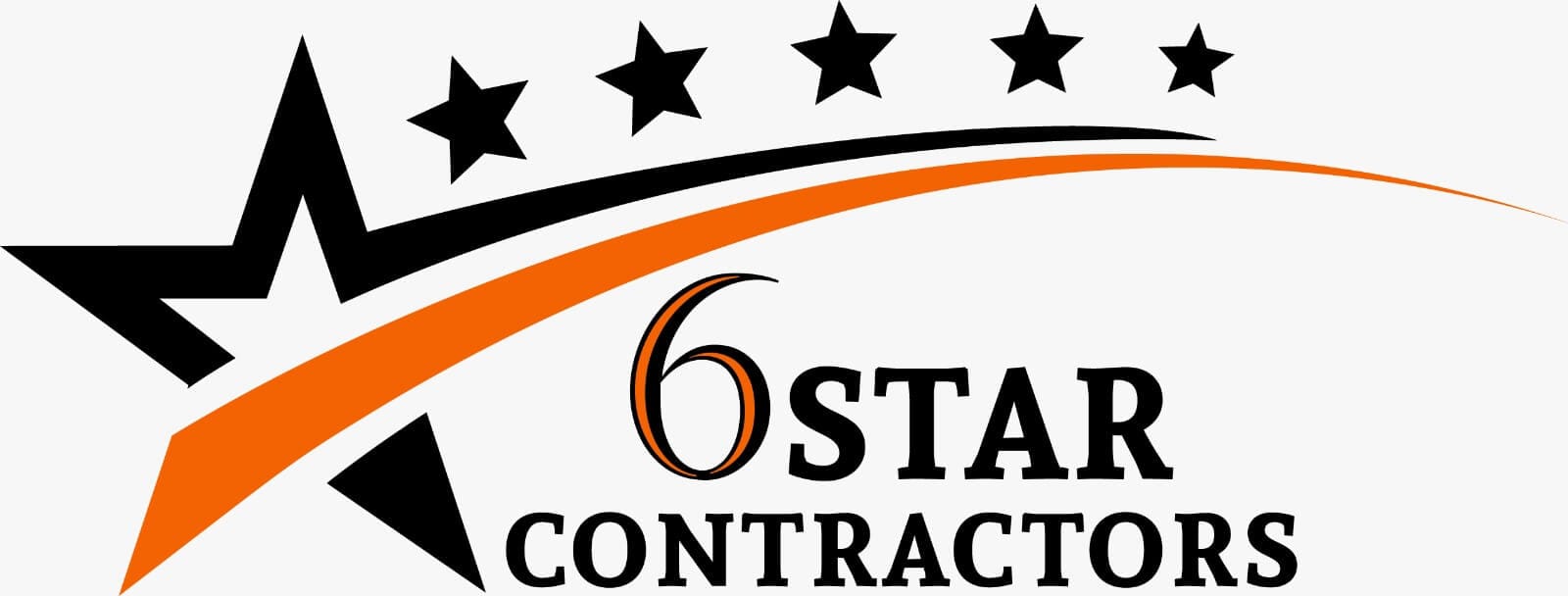

561-530-2845
info@estimatorflorida.com
Address
5245 Wiles Rd Apt 3-102 St. Pete Beach, FL 33073 United States
561-530-2845
info@estimatorflorida.com
Address
5245 Wiles Rd Apt 3-102 St. Pete Beach, FL 33073 United States
All copyright © Reserved | Designed By V Marketing Media | Disclaimer